|
|
Post by Karl Welteke on Dec 5, 2016 10:27:01 GMT 8
Old Blue, former Colors of the US Marine Corps 4th Regiment. 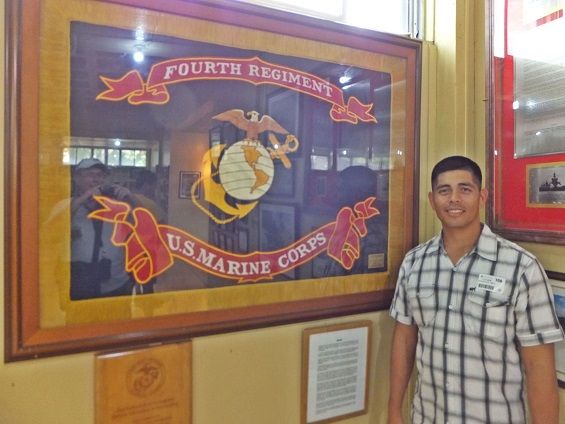 V399. This is a replica of the original colors of the United States Marine Corps 4th Regiment and it is located in the Pacific War Memorial Museum on Corregidor Island, the former Fort Mills. On the 7th Nov. 2016 I accompanied two 4th Marine Officers to Corregidor to help in acquainting them to the former battle field of the 4th Marines. This is Capt Vonn (first name only) standing in front of replica of the original colors of the United States Marine Corps 4th Regiment. He was a Filipino American and was intensely interested in the history of the era. What is the story about Old Blue? Look at this URL: www.chinamarines.com/ver3/blu.htm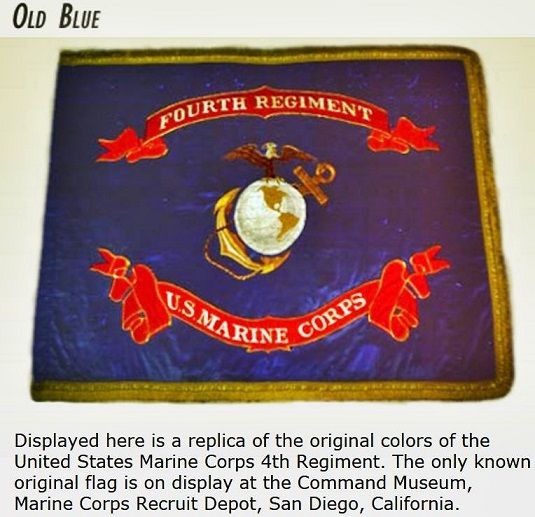 V433. This is Old Blue from the above China Marine URL. This is the history of the Old Blue, former Colors of the US Marine Corps 4th Regiment from the above URL: Displayed here is a replica of the original colors of the United States Marine Corps 4th Regiment. The only known original flag is on display at the Command Museum, Marine Corps Recruit Depot, San Diego, California. Following is a history of that original flag. In 1923, the 13th Commandant of the United States Marine Corps, General John A. Lejeune, directed the traditional blue colors of the Corps be replaced, as needed, with new colors, consisting of a scarlet background with scarlet and gold inscription. In 1933, with creation of the Fleet Marine Force, all regiments of the Corps were renamed and The Fourth Regiment of Marines, originally formed in 1911 under the command of Colonel C. A. Doyen in San Diego, California became the 4th Marine Regiment. It took time for the Commandant's directive to reach "every clime and place." But, on July 4th, 1937 in Shanghai, China this original flag know throughout the regiment as Old Blue, was marched front and center of the spit-shined regiment one final time, before being retired. The directive to change the regiment's colors from blue to scarlet included an order that all retired colors would be destroyed by burning. Fortunately an unnamed Marine, who apparently could not bear to carry out the order to burn the colors, hid Old Blue in the bottom of his seabag. That nameless Marine later died in the line of duty in China and his personal effects were carried to the Philippines when the 4th Marine Regiment evacuated Shanghai and moved to the Island of Corregidor. Miraculously, at the end of World War II, the personal effects of the men of the 4th Marines were returned to Marine Barracks, Mare Island, California, to await final shipment home. Among them was the Marine's seabag which still contained the original Regimental Colors. An officer detailed to inventory personal effects found Old Blue neatly folded at the bottom of the deceased Marine's seabag. Realizing the value of his discovery, he transferred the flag to his personal belongings. Twenty years later the long-forgotten colors were rediscovered by the officer in a deteriorating state. Wanting to return Old Blue to the Marine Corps, the officer contacted LtCol. Bob Calland, USMS (Ret.), at the Smithsonian Institute, in Washington, D.C. The Regimental Colors were brought the Marine Corps Museum at the Washington Navy Yard and were placed in storage at the Marine Corps Base, Quantico, Virginia. Aware that the 4th Marine Regiment was formed in San Diego, LtCol. Calland began the process to bring Old Blue back home. Following an expensive restoration project, Old Blue was fully restored and arrived at the Marine Corps Recruit Depot's Command Museum, in February 1991. Recalled from generations of benevolent neglect, the 4th Marine Regiment's Old Blue is magnificent in its resurrection and fully pardoned from the 1923 sentence "...to be destroyed by burning." I had noticed Old Blue before and took these pictures on our Corregidor Flag Raising Visit 2009-02-16. 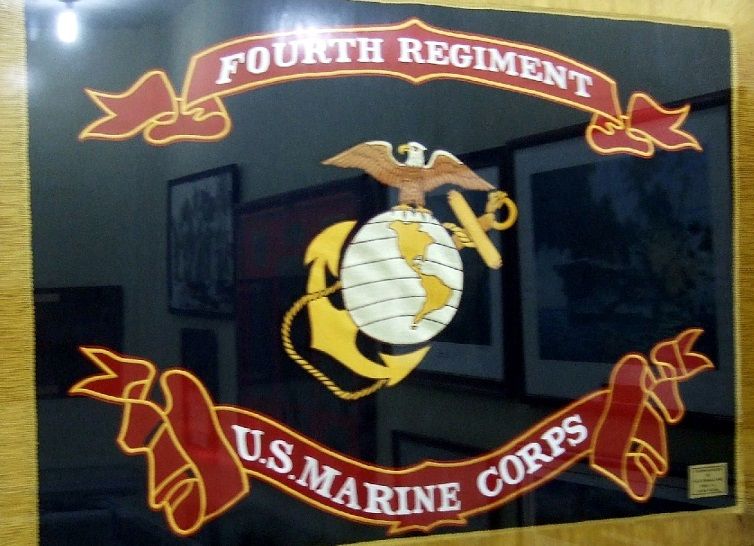 V434. This is a replica of the original colors of the United States Marine Corps 4th Regiment and it is located in the Pacific War Memorial Museum on Corregidor. Under the replica of the original colors of the United States Marine Corps 4th Regiment are also two plaques. I only now notice a copper plate at the right lower corner, most likely indicating when the flag was donated and by whom. This is another reason to visit Corregidor to find out. 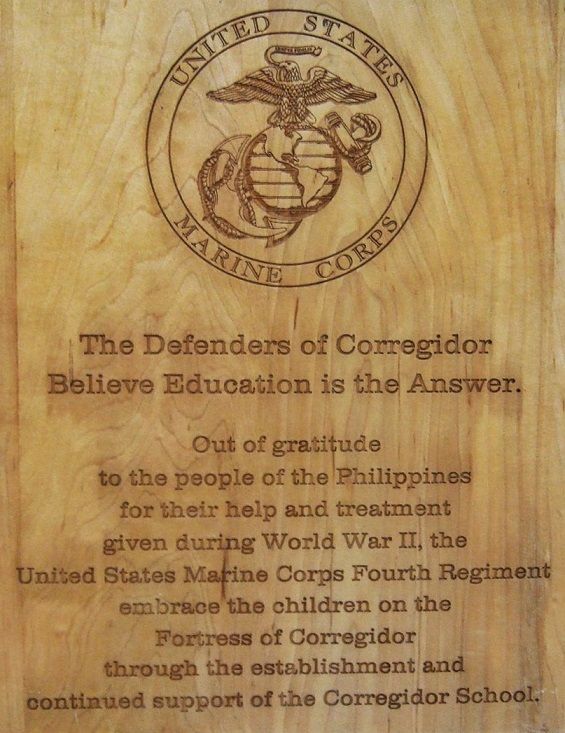 V435. Under the replica of the original colors of the United States Marine Corps 4th Regiment are also two plaques. This is the left one, stating the resolve of the 4th Marines to help the Filipinos in their education in gratitude of the help they received in the war. 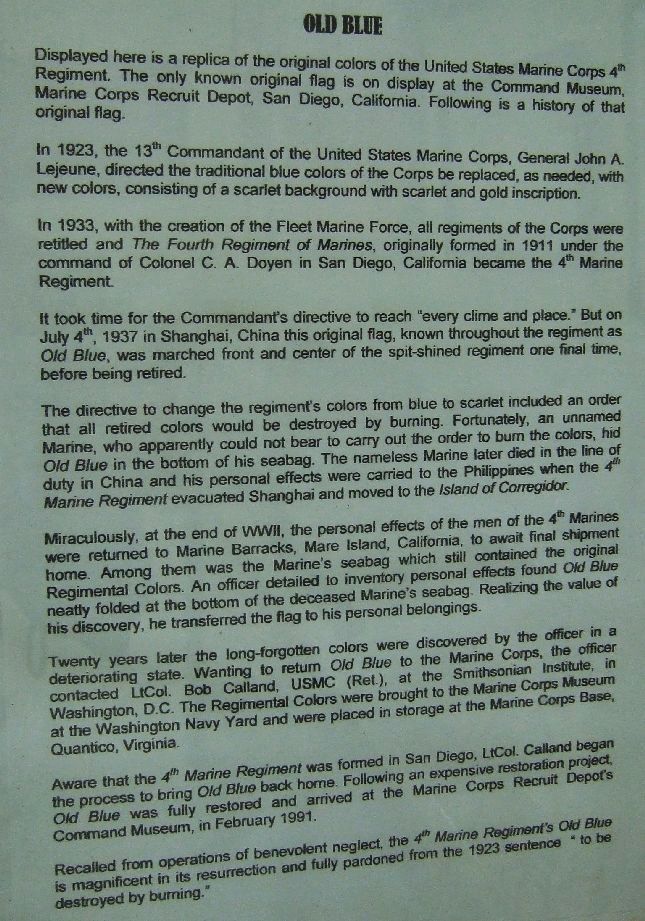 V436. Under the replica of the original colors of the United States Marine Corps 4th Regiment are also two plaques. This is the right one telling the history of this of the original colors of the United States Marine Corps 4th Regiment. Note: The above 5 images are also available at a larger size in the Photobucket album: s74.photobucket.com/user/PI-Sailor/library/Corregidor%20by%20subject/CI%20Subalbum%20No%202/Marines%20%20on%20Corregidor?sort=9&page=1 |
|
|
|
Post by beirutvet on Dec 5, 2016 22:38:11 GMT 8
Karl Outstanding history lesson as always! I did wonder about the colors but thought it was just an "Old Corps" kinda thing,,,, which it turns out it was. In the spirit of the post and info I am including a pic of me on my 2011 trip standing between the 4th Regiment colors and the picture of the USS Olympia. Both near and dear to my heart. 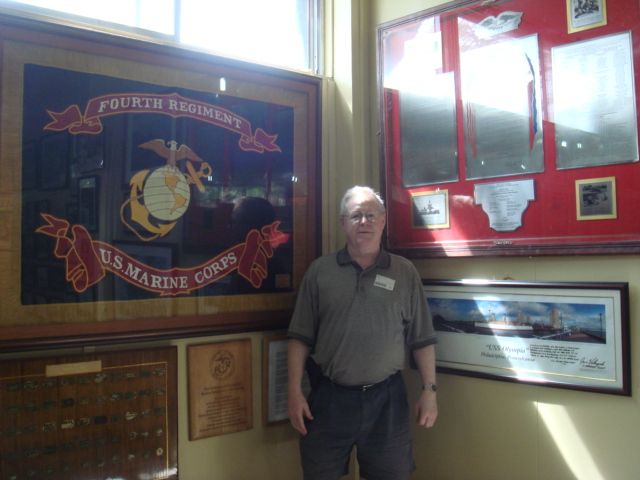 Notice: 2017-09-23 the original picture above has been blocked by Photobucket in 2017 because they changed their terms on a very short notice, no notice really! As of today it is reposted but from a more friendly server! 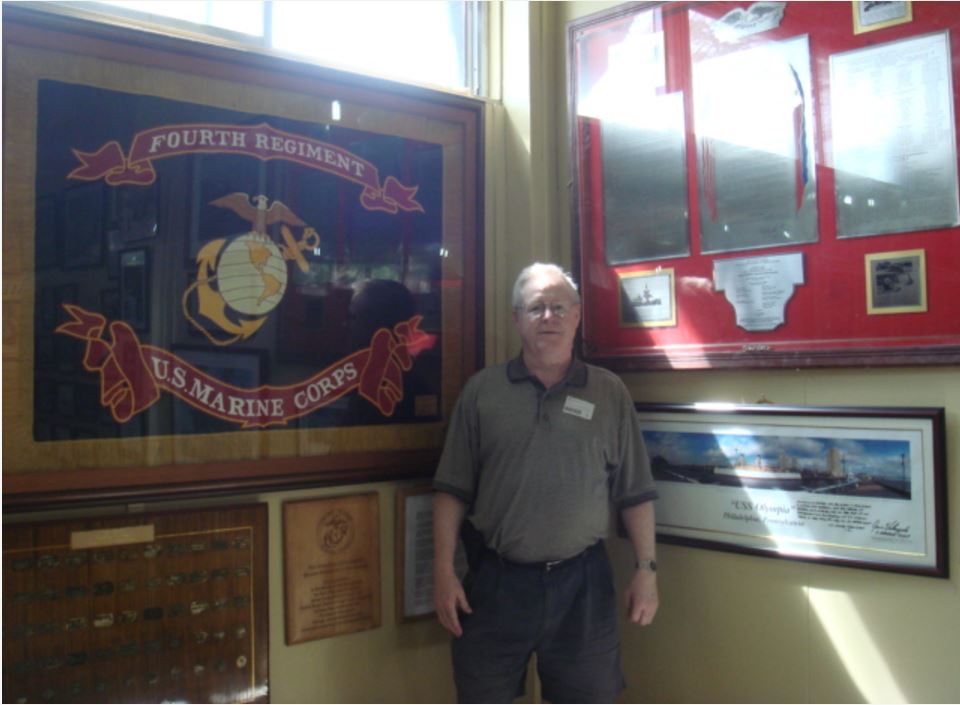 |
|
|
|
Post by Karl Welteke on Dec 10, 2016 19:56:25 GMT 8
A Marine Officer lived on Corregidor about 10 years. The Marine Officer was Capt. Daniel D. Howell USMC (Ret). I don’t know when he lived on Corregidor, I met him on Corregidor only 1 time, and he had two teen age children with him and was preparing to leave for the States for good. That may have been around 2006 but I am just guessing. I know he served in Viet Nam, had a house in James Ravine, but that got destroyed by a typhoon and then he resided in the post WWII Corregidor school building, that is where I met him. He said he was the Pacific War Memorial Museum Curator and he gave me a business card that said so (lost it though). Danny Howell collected many WWII artifacts and gave them to the museum. He wrote a book with title: The Battle for Corregidor: December 1941 - 6 May 1942: the 4th Marine Regiment hung out to dry. When I met him he was living mainly in Barrio Barretto, Olongapo City and I had 3 short encounters with him. Although I desired to get to know him closer, it never happened, he was making preparation to leave the Philippines. I think he had Medical issues. I uploaded 7 images (numbered d1 to d7) into this album; s74.photobucket.com/user/PI-Sailor/library/Corregidor%20by%20subject/CI%20Subalbum%20No%202/Marines%20%20on%20Corregidor?sort=9&page=1The same 7 pictures are shown here but are much smaller: 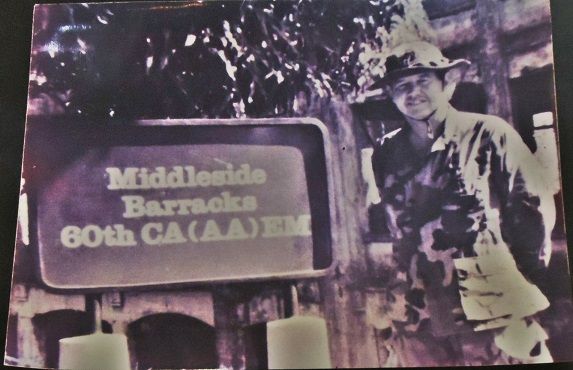 V444. (D1. 120215k Museum..10a. This is Denny Howell next to the Middleside Barracks. Probably most likely, people who knew him on the island, remember him. That is how he dressed and roamed the former Fort Mills on the island of Corregidor. This is a picture displayed in the museum of the Pacific War Memorial Topside on Corregidor Island. 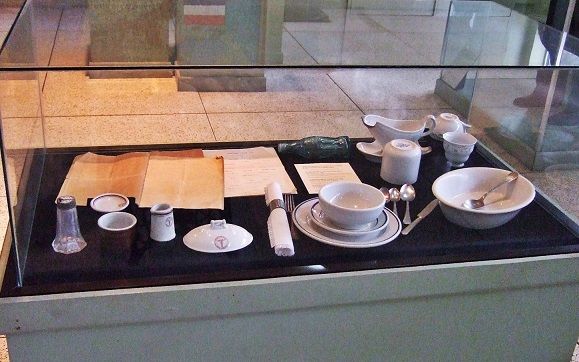 V445. (D2). In this display box are table ware of the various military units on Corregidor. They were found, restored and donated by Capt. Daniel D. Howell USMC (Ret).  V446. (D3). This is the information plate of the display box in the last image. 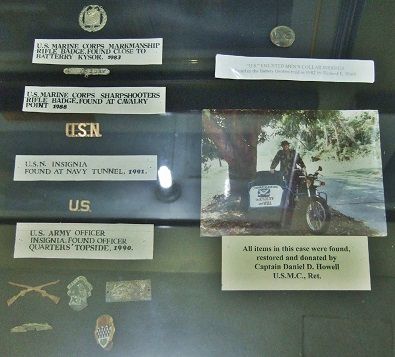 V447. (D4). Another display box with various military uniform items found, restored and donated by Capt. Daniel D. Howell USMC (Ret). This image shows that he had a tricycle to get around the island. 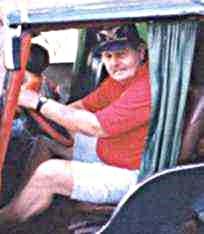 V448. (D5). This picture came from Corregidor.org and shows Danny Howell the way I met him one time about 20 years ago. While I was walking in the Subic Town Boondocks, he caught up to me with this jeep and that is how he looked and asked me whether a road existed to Gains Beach on the west side of the bay of Subic Bay.  V449. (D6). This is the front cover of the book that Danny Howell wrote. The title is: The Battle for Corregidor: December 1941 - 6 May 1942: the 4th Marine Regiment hung out to dry. It may hard to find, it was a limited issue but I do have copy. 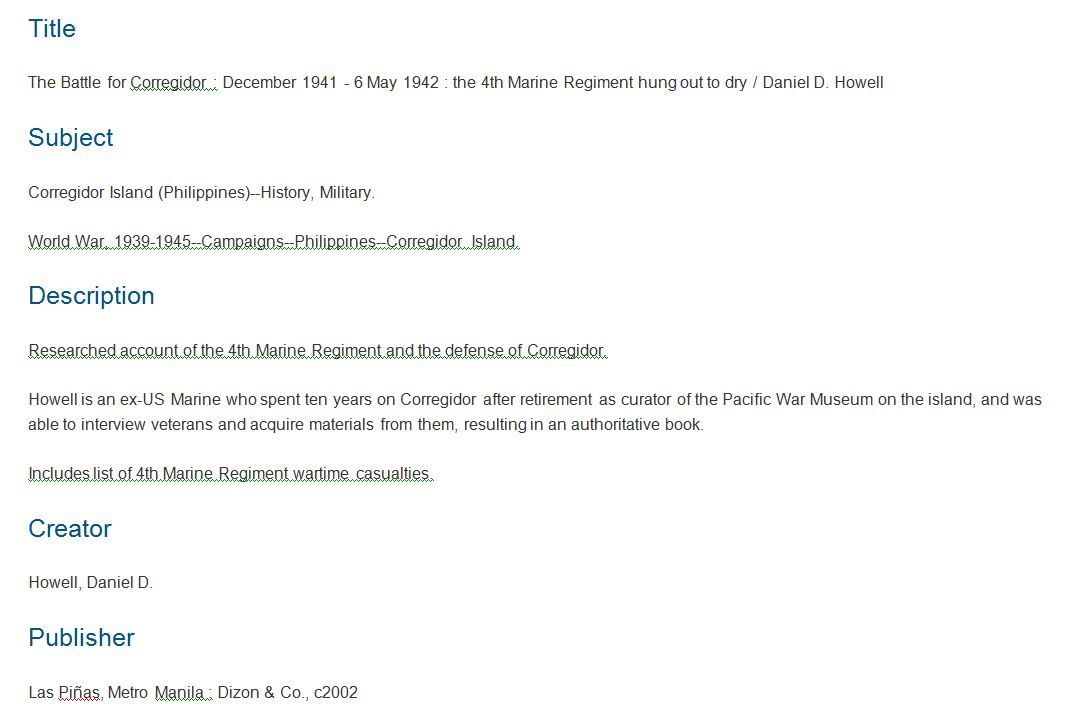 D7. Danny Howell’s book is displayed on the www and here is the URL: rodhall.filipinaslibrary.org.ph/items/show/1529 This is some of the data information of his book. |
|
|
|
Post by EXO on Dec 11, 2016 11:39:07 GMT 8
Karl,
I knew Danny fairly well (one of those photos you posted was mine) and though we had our ups and downs (which I attributed to his PTSD, which was pretty fierce) we shook hands on it. Indeed, most everyone considered him good hermit material, as he had differences of opinion with most everyone of his friends at one time or another. (We didn't understand PTSD very well in those days, and Danny had a pretty rough time of it. His was no bullshit trauma. He did tell me of being promoted by catching his rank badge as it was thrown to him by an officer in a departing helicopter.) These were the early days of "the Hobby", of George Munson, Bob McGetchin and Al McGrew, and prior to the internet. Danny knew that his book was going to be controversial, and that it was not going to win him any friends - because, in disclosing the real truth, it challenged some "too great to fail" reputations. Danny believed that one of his medals was being reconsidered for upgrading to a Navy Cross, and that the publication of the book would kill his chances.
The book sure could have done with a good sub-editor's spit and polish, but it is one of those few books that contains the very essence of the truth that puts all the strange circumstances of 1941-42 into an almost perfect clarity. I can quite understand why mainstream publishers wouldn't touch it, as they make too much money peddling the "accepted truth" which isn't the truth at all.
Danny feared that publishing the book would turn him into a pariah, and I suspect he was right. When too many people have been sworn to secrecy, the truth teller is never welcome.
The last I heard of him, Danny was back in Florida, trying to assist his two children towards proper documentation of their citizenship, and being depressed that the foundations of his house there were sinking and cracking. I sure wish I could track him down, because I'd like ask his permission to reprint his book for our new generation of students. There was no one more pleased than me when I discovered that Col. Norton, current commander of the 4th USMC, had acquired a copy and was reading it. I have lent my copy to someone in the Embassy this week, and I sure hope their photocopier gets a good leatherneck whipping.
A few vignettes about Danny. For some years he had the great distinction to have the only refrigerator on Corregidor. God knows how he managed it.
He had three Japanese skulls in his house, and they were named Huey, Dewey and Louie. Many people won't know this reference, so I won't tell them.
He lost them all when a typhoon washed the house in James Ravine away.
He felt very much like the "token" American on Corregidor, and we know that generally doesn't end well. Danny deserved better.
Paul
|
|
|
|
Post by Karl Welteke on Dec 13, 2016 18:33:50 GMT 8
John Wayne and an infamous Marine on Corregidor. We have an interesting thread about these two personalities in our Corregidor Proboard/Forum and I will post the URL a little later. The thread is from one of our long time members Chadhill (Global moderator); it was posted on the 20th Jan 2010. He also added a picture about both personalities and the picture is from John Marckx, USMC, who was a member of the Marine detachment on Corregidor in 1958. Here is chadhill’s text: In January 1958 a detachment of US Marines from Subic Bay set up a small radar station on Corregidor. They were TDY there for about ten weeks, bivouacking in the remains of the hospital. Actor John Wayne, while filming the movie "The Barbarian and the Geisha", took a helicopter to Corregidor for a visit. While there, he had lunch with the marines. John Marckx, USMC, was a member of the Marine Detachment. He took this photo of Wayne eating lunch. Standing in the background on KP duty is another individual known to US history. Can you identify him? His name is revealed below the photograph: 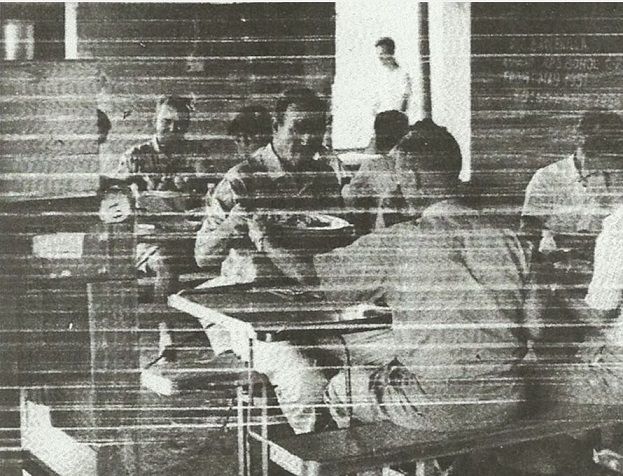 V455. Photograph of John Wayne and Lee Harvey Oswald on Corregidor Jan 1958 from John Marckx, USMC, who was a member of the Marine Detachment. The URL of the text and picture in this thread is: corregidor.proboards.com/thread/861/corregidor-triviaThis thread has two more entries and it is speculated whether Lee Harvey Oswald’s duty with this radar unit could have a connection with Francis Gary Powers' misfortune. |
|
|
|
Post by fortman on Dec 14, 2016 1:16:40 GMT 8
K-W,
The photo of Wayne's visit to Corregidor with Lee Harvey Oswald in the background is incredible stuff!Where else but on this Website would one have learnt of this.
Regards,
Fortman
|
|
|
|
Post by chadhill on Dec 14, 2016 8:28:50 GMT 8
Thanks to EXO for providing the interesting info about Daniel Howell, who wrote The Battle for Corregidor December 1941-6 May 1942, The 4th Marine Regiment Hung Out to Dry. I have poured through this great book several times and it is easy to see why it would be considered so controversial, dispelling as it does a number of myths that conventional historians seem to have blindly accepted about the battle for Corregidor. This book also reveals the serious flaws of several US senior officers with witness statements that I have not seen elsewhere. Without going into detail, suffice it to say that the chapters titled "The Food, Water and Fuel Controversy", "Tank Controversy and Confusion", "Command Decisions: Some Leave the Rock, Some Stay" and "Leadership Abilities of the Senior Officers" head the disputes discussed within. It should be noted that the book has the endorsement of a number of Corregidor veterans. Howell's 2003 book tops my list of those about the 4th Marines, and it is one of my overall favorites about the 1941-42 battle. Printed in Manila, I don't believe it is widely known to current US authors because it rarely shows up in the bibliographies of recent books or other references. My son left his copy in good hands with the Auburn University USMC ROTC, so maybe the word will spread  . I think it would be great to reprint it as you have suggested, EXO. To those looking for further info about the 4th Marines, I have found plenty of ammunition in Alamo of the Pacific by Otis King, and Soochow and the 4th Marines, by William Evans. Both authors served with the 4th, and although these books are out of print, used copies at reasonable prices frequently turn up on amazon dot com, etc. John Gordon's recent "Fighting for MacArthur" is a good read also. |
|
|
|
Post by Karl Welteke on Dec 26, 2016 10:47:20 GMT 8
4TH MARINES RETURN TO CORREGIDOR 23rd APRIL 2011 This entry is from Steve and Marcia Kwiecinski who lived on Corregidor for about 7 years and maintained a blog. This is the blog entry URL when they guided a group of 4th Marines on their visit from Angeles Town to Corregidor via Bataan: steveandmarciaontherock.blogspot.com/2011/04/4th-marines-return-to-corregidor.htmlThey gave me permission to use the blog entry and I copied only some paragraphs and only 3 images here and they are smaller than in the above blog. 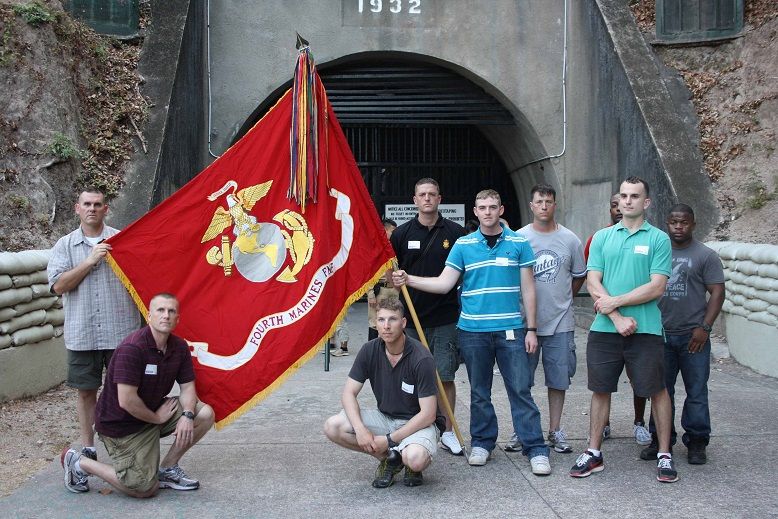 V489. Saturday, 23rd April 2011. The Few, the Proud unfurl the United States Marine 4th Regiment Colors in front of the east entrance to the Malinta Hill Tunnel of the Former Fort Mills on Corregidor Island. The 4th Marines HQ was in that tunnel and the reinforcement for the 1st Battalion streamed out of this entrance to help their fellow 1st Battalion Marines on the 6th of May 1942. Here are a couple of trivia questions for you: Who are the “China Marines”? What was Marine Colonel Samuel Howard forced to do on Corregidor that no other U.S. Marine officer had ever done? The 4th Marines had been in China so long (15 years) before the outbreak of WW II that they became known as the China Marines. In late November, 1941, only 10 days before the outbreak of WW II, most of the 4th Marine Regiment was shipped out of Shanghai and sent to the Philippines. They started in Olongapo, 750 of them, but were later strengthened to 1,600 men. Just before bombs began falling on Corregidor (December 29) the 4th Marines were moved to the island. They were assigned to quarters in Middleside Barracks, but were almost immediately deployed to their defensive positions. The 1st battalion was assigned to the tail of the island, while the 2nd and 3rd were positioned around the head of the island. Only the 1st, along with American Army and Filipino Scouts, were in position to take on the Japanese landing barges during the assault. It is said that members of the other Marine battalions were greatly upset to have missed the opportunity to kill any Japanese before the surrender. 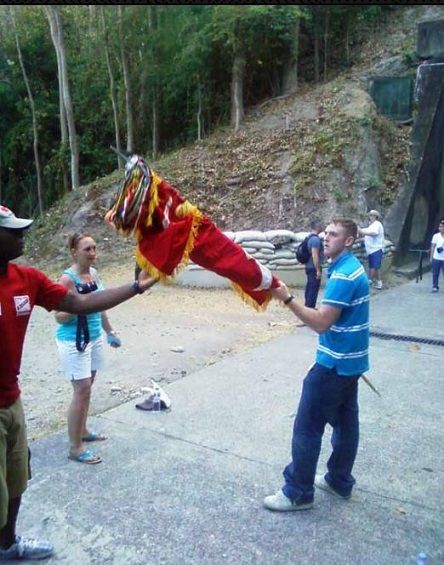 V490. Steve led a tour bus that included 16 U.S. Marines who were in the Philippines for a “balikatan” (shoulder-to-shoulder) exercise with Filipino soldiers. Throughout the entire trip one marine carried a long, thin canvas bag with him; he appeared to be on a mission. Steve eventually asked and was told, “I’m carrying the 4th Marine Colors. We believe that it will be the first time that they are unfurled on Corregidor since the war.” Certainly these men were but a few, and they were very proud, so we guess that makes them U.S. Marines. 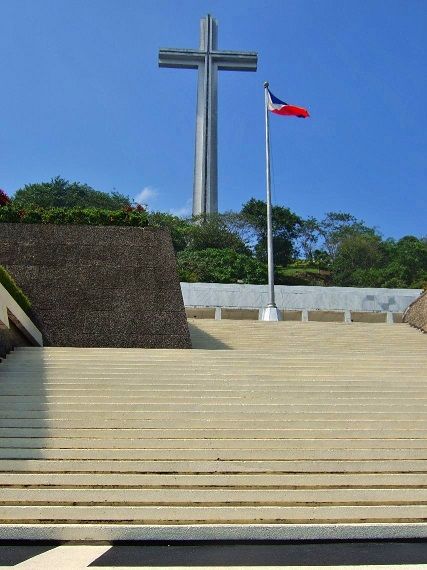 V491. Steve and his Marines headed first for Mount Samat. We were very surprised at how busy the shrine was, being Black Saturday. They enjoyed viewing the huge cross and the sculpture, photo and battle-line displays. This is one of my Mt. Samat pictures, dated Nov. 8th 2007 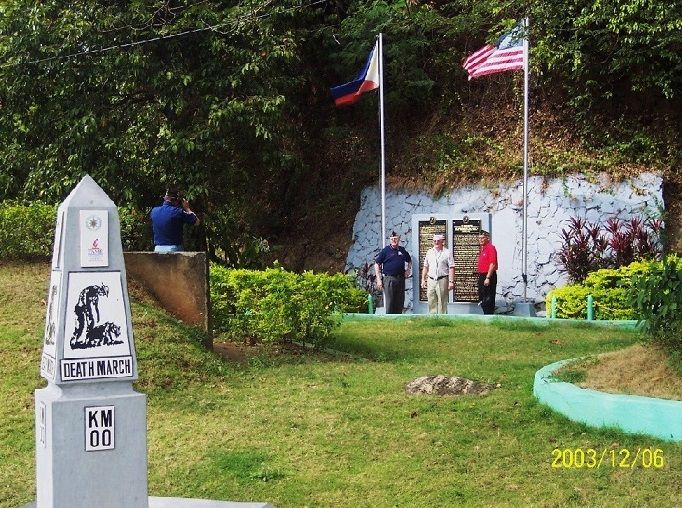 V492. They drove on to Mariveles to the Bataan Death March memorial at Kilometer Zero in Mariveles, and then ate lunch at the neighboring Jollibee. This is one of my 2003 pictures of the Death March Marker Zero; I took some visiting VFW members from the USA around. 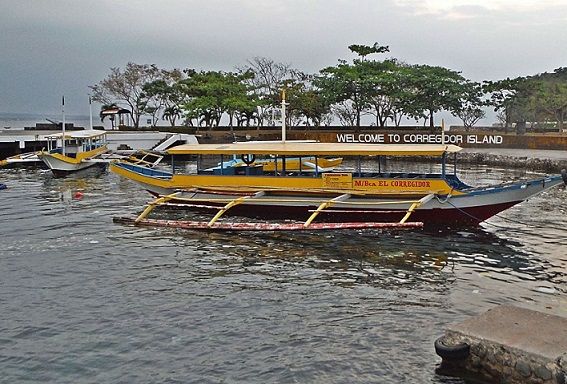 V493. After lunch we back-tracked about 10 kilometers along the highway – which is also the first part of the Death March route – to the pier at Kamaya Point where we were met by El Cor I, a large banca, for our crossing to Corregidor. We did the usual island historical tour, and then said our goodbyes before the group boarded El Cor I for the return trip to their vans at Kamaya, and their ride back to Angeles. It was nice to spend the day with a group that has a strong appreciation for this part of history. We hope to see some of them return to Corregidor for a day of hiking. This is a 2016 image of the El Corregidor boat at the North Dock area on Corregidor Island. 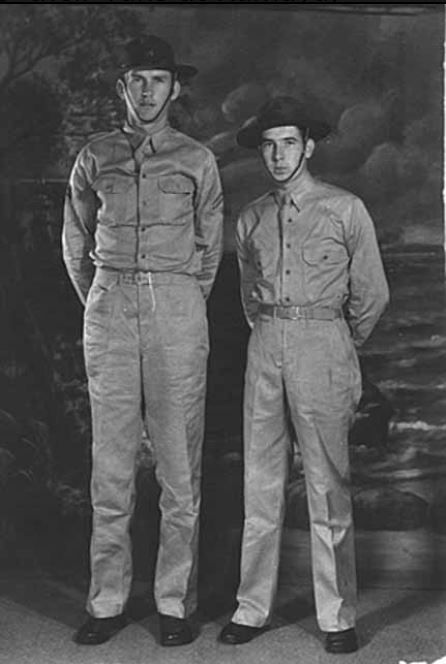 V494. The 23rd April was a also a special remembrance day for the Kwiecinski family; it was the 70th anniversary of Steve’s father Walter arriving on Corregidor, having departed from San Francisco on midnight of March 31/April 1, 1941. After a 22-day ride on the Republic, he arrived in Manila on the 22nd and was sent almost immediately across to the island. Attached is a picture of Walter (tall one on left) with an unknown soldier taken on Corregidor in the summer of 1941. Although Steve and Marcia Kwiecinski have returned to the United States their Blog is active. This is the URL to their Blog, it is about their 7 year experience on Corregidor and about the many visitors they guided around the former Fort Mills on Corregidor Island. steveandmarciaontherock.blogspot.com/ |
|
|
|
Post by cbuehler on Dec 26, 2016 23:38:39 GMT 8
This has been a very interesting thread, particularly about Daniel Howell, whose book I would certainly want to read if I could get a hold of a copy.
Too many inaccuracies and downright myths about Corregidor and Bataan have become historical conventions as Chadhill mentioned.
I would guess that the Kwiecinski's may be the last of the American residents on the island. The connections which brought them and Howell there are going fast now.
CB
|
|
|
|
Post by chadhill on Dec 27, 2016 6:02:10 GMT 8
I just got off the phone with T. Cadman book sellers in Carmichael, CA, USA. They told me that Daniel Howell sold them his entire inventory of "The Battle for Corregidor December 1941-6 May 1942: The 4th Marine Regiment Hung Out to Dry" and they have plenty of copies for sale. The website lists the price as $20 USD. Here is the info: www.cadmanbooks.com/booksgl.htmlPhone: 1-800-540-0053 |
|


























 . I think it would be great to reprint it as you have suggested, EXO.
. I think it would be great to reprint it as you have suggested, EXO.




